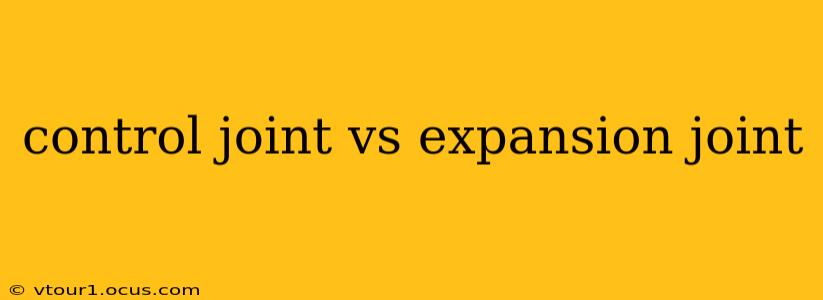Construction projects, whether large-scale infrastructure or smaller residential builds, rely heavily on understanding and implementing different types of joints to manage stresses within structures. Two crucial types are control joints and expansion joints. While both address movement within concrete and other materials, they do so in fundamentally different ways. This article will delve into the key distinctions between control joints and expansion joints, helping you understand their applications and importance.
What is a Control Joint?
A control joint, also known as a contraction joint, is a planned weakness in a concrete structure. It’s intentionally created to control cracking by guiding the inevitable shrinkage cracks that occur as the concrete cures and dries. Instead of random, unpredictable cracks across the surface, the control joint provides a predetermined path for these cracks to follow. This results in a more aesthetically pleasing and structurally sound outcome.
How Does a Control Joint Work?
Control joints are created by either sawing a groove into the concrete after it's poured (a saw cut) or by using a pre-formed joint filler during the pouring process. The weakened section allows the concrete to crack along the predetermined line, preventing larger, more disruptive cracks from forming elsewhere. The depth of the cut or the filler determines the effectiveness of the control joint, ensuring the crack remains localized.
When Are Control Joints Used?
Control joints are typically used in:
- Concrete pavements: Driveways, sidewalks, patios, and roads all benefit from control joints to manage shrinkage cracking.
- Concrete walls: Large walls, especially those exposed to the elements, require control joints to handle the stresses of drying and temperature changes.
- Concrete slabs: Wider concrete slabs are more prone to cracking; control joints mitigate this risk.
What is an Expansion Joint?
Unlike control joints, expansion joints accommodate movement in a structure caused by factors such as temperature fluctuations, moisture changes, or seismic activity. They are designed to allow for expansion and contraction without causing stress that could lead to cracking or damage. Essentially, they create a gap that allows the structure to move independently on either side of the joint.
How Does an Expansion Joint Work?
Expansion joints are typically filled with a flexible material, such as sealant, which allows for movement while maintaining a barrier against water and other elements. The size of the gap in the expansion joint is carefully calculated based on the expected movement of the structure.
When Are Expansion Joints Used?
Expansion joints are essential in situations where significant movement is anticipated, including:
- Bridges: The expansion and contraction due to temperature changes require expansion joints to prevent structural damage.
- Buildings: Large buildings, especially those with significant length, often incorporate expansion joints to account for thermal movement.
- Long pavements: Extensive pavements may require expansion joints at intervals to accommodate the effects of temperature changes and seasonal shifts.
Control Joint vs. Expansion Joint: Key Differences Summarized
| Feature | Control Joint | Expansion Joint |
|---|---|---|
| Purpose | Control cracking due to shrinkage | Accommodate movement due to expansion/contraction |
| Movement | Minimal movement accommodated | Significant movement accommodated |
| Joint Type | Saw cut or formed during pouring | Filled with sealant or other flexible material |
| Material | Typically no filler, sometimes sealant | Always filled with a flexible material |
| Width | Relatively narrow | Relatively wide |
How to Choose Between a Control Joint and an Expansion Joint?
The choice between a control joint and an expansion joint depends entirely on the specific application and the expected level of movement. A structural engineer will typically determine the appropriate type and placement of joints based on several factors, including:
- Material properties: The type of concrete or material being used.
- Environmental conditions: Temperature variations, humidity, and potential seismic activity.
- Structural design: The overall design and dimensions of the structure.
What is the Difference Between a Construction Joint and a Control Joint?
While often confused, a construction joint is a joint created where pouring of concrete is stopped and restarted. It's not designed to control cracking in the same way as a control joint. A construction joint can be later treated as a control joint through sawing or adding sealant, but it starts as a point of interruption in the concrete pour.
What is the Purpose of a Contraction Joint?
A contraction joint, another name for a control joint, serves to control the location of cracks caused by the shrinkage of concrete as it dries and cures. This prevents larger, more damaging cracks from forming unpredictably.
This detailed comparison clarifies the distinct roles of control joints and expansion joints in construction. Understanding their differences is critical for ensuring the longevity and structural integrity of any project. Remember to consult with qualified professionals for specific design and implementation requirements.
